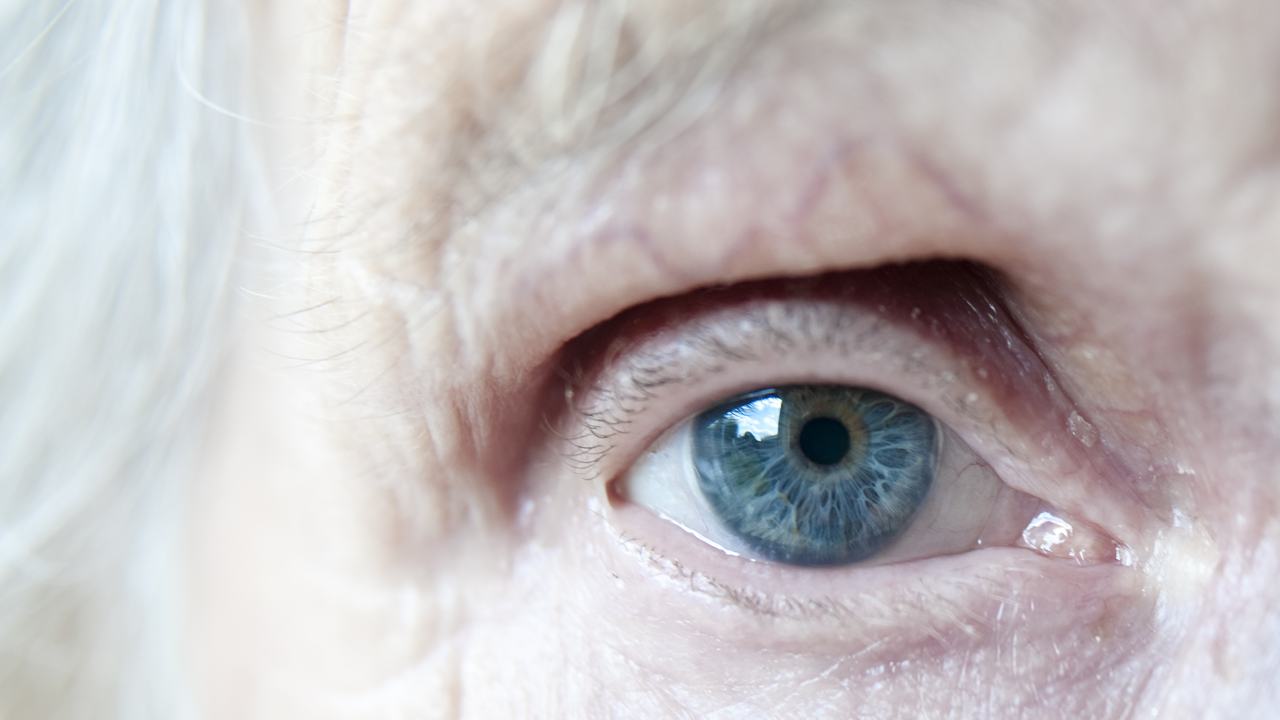
A layer of cells that have no power to regenerate themselves is emerging as a key site of damage in age-related macular degeneration (AMD), the leading cause of blindness in elderly people in the developed world. AMD robs people of their central vision, and with it the ability to read, drive and even recognize faces.
By pinpointing damage that occurs before any sight is lost, U of M researchers have identified a target for therapies to slow the progression of the disease. This would blunt the impact of AMD, which is poised to double in prevalence over the next 20 years as the bulk of baby boomers reach age 65.
Research led by ophthalmology professor Deborah Ferrington shows that damage is already detectable early in the disease, and is localized to a non-dividing layer of cells called the retinal pigment epithelium (RPE). The work is published in the Journal of Neuroscience.
Research on AMD has evolved quickly over the last five years, and it points to a complex disease.
“It was previously thought that one simple mechanism would cause AMD, but it’s not that way at all,” Ferrington says. “Genes implicated in AMD are clustered in several distinct biochemical pathways. You can get what looks like the same disease many different ways.”
A Vulnerable Tissue
The oval-shaped macula is a pea-sized pigmented area near the center of the retina. It includes the fovea, the area containing the densest concentration of cone cells, which are responsible for our high acuity and color vision. When cones degenerate, central vision is lost and patients must learn how to perceive objects using their periphery for sight, Ferrington says. Although AMD affects the whole retina, it’s the damage to the macula that gets most of the attention, because that’s the area that produces the most critical vision.
Although AMD affects older individuals, age alone isn’t a cause. Instead, says Ferrington, one’s genetic profile or an environmental insult like smoking may trigger the disease with age. In the current study, her group discovered that damage to DNA happens very early in the disease.
“That makes [the early stages] a point of intervention,” she says. “We also showed that damage is localized to the RPE.”
The Retinal Caretaker
The RPE forms a dark-colored lining behind the “neural” retina, which comprises the photoreceptor cells. The RPE supports everything that goes on in the photoreceptors; among other functions, it recycles the worn-out tips of rod and cone cells. But since RPE cells are unable to divide, they can’t be replaced when damaged.
When AMD starts to develop, the researchers found, it damages the DNA of mitochondria inside RPE cells. Mitochondria are the numerous membrane-enclosed powerhouses that supply most of the energy a cell uses. Their DNA is contained in a single circular chromosome similar to that of a bacterial cell—evidence that they originated as free-living organisms that colonized larger cells near the dawn of evolution.
Examining mitochondrial DNA from donor RPE at four stages of the disease, Ferrington and her colleagues found a steady and significant increase in the number of chromosomal lesions as the disease progressed. No such increase occurred in DNA from the rest of the retina.
“That was a complete surprise,” says Ferrington. “I had expected that with high damage in RPE would come the same in the neural retina, but that was not so. In part, this was due to the mitochondria having inferior DNA repair mechanisms.”
Hope on the Horizon
The search for medical treatments often resembles efforts to stop water pollution: Scientists seek the earliest “upstream” event in a chain leading to clinical symptoms and try to fix it.
“Mitochondria are a really good target for therapy,” says Ferrington. “They may be the site of a common upstream biochemical pathway that could allow us to intervene.
“We see mitochondrial dysfunction in Parkinson’s and Alzheimer's diseases, so mitochondria are sort of an Achilles heel for several age-related diseases.”
Armed with a grant from the Foundation Fighting Blindness, she and her colleagues are testing FDA-approved drugs that might boost mitochondrial function in human donor tissue. One that has been effective in cultured RPE cells is N-acetyl cysteine, already used clinically for poisoning by acetaminophen, the active ingredient in Tylenol.
The team also has a mouse model for the most common form of AMD. It appears to result from “oxidative stress,” damage caused by forms of oxygen that wreak havoc with proteins, DNA, lipids, and other cellular components. The mice have reduced defenses against oxidative stress, and when data on drug efficacies from cultured cells have become clear, the researchers will test those drugs in the mice.
“If we can keep the mitochondria healthy, we may slow the progression to blindness,” says Ferrington. “Because mitochondrial damage occurs before vision loss, early intervention would likely protect or rescue RPE mitochondrial function. This is the best place to start aiming therapies.”